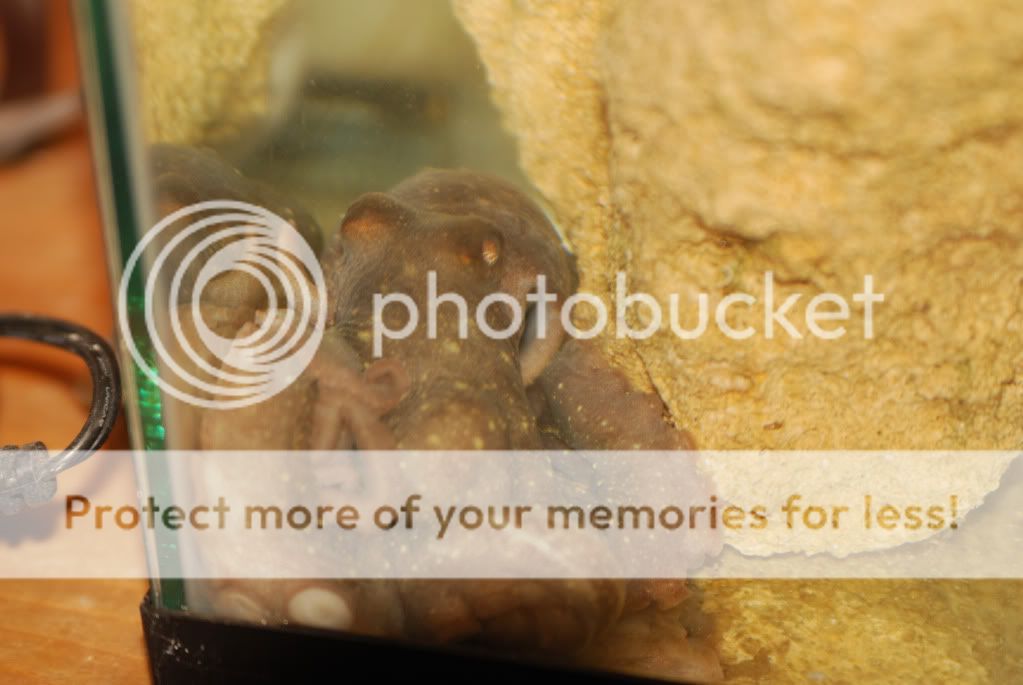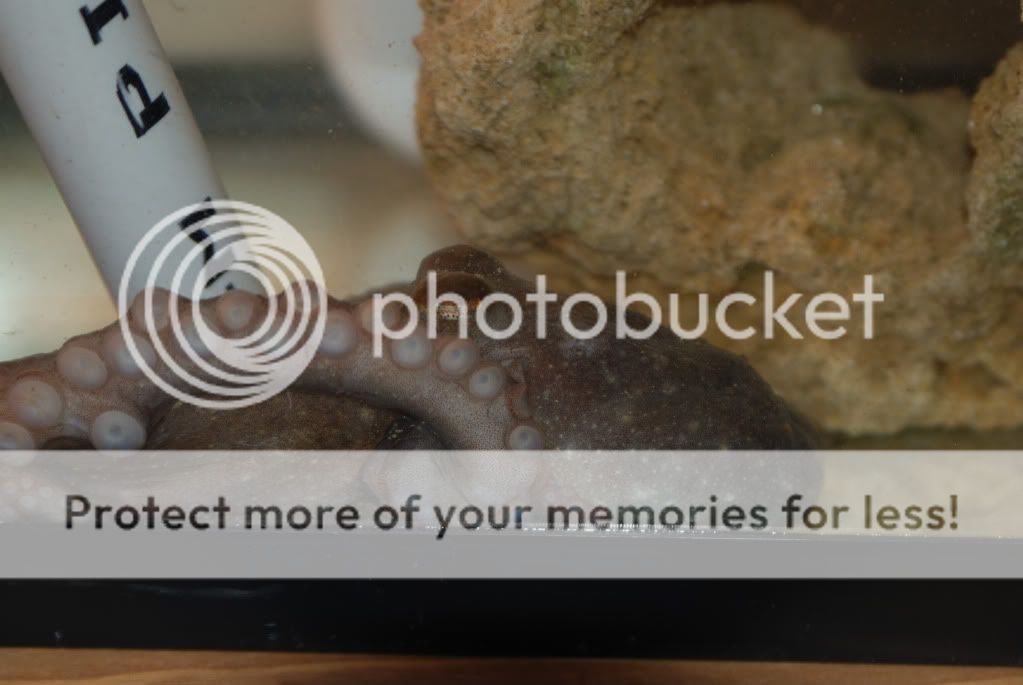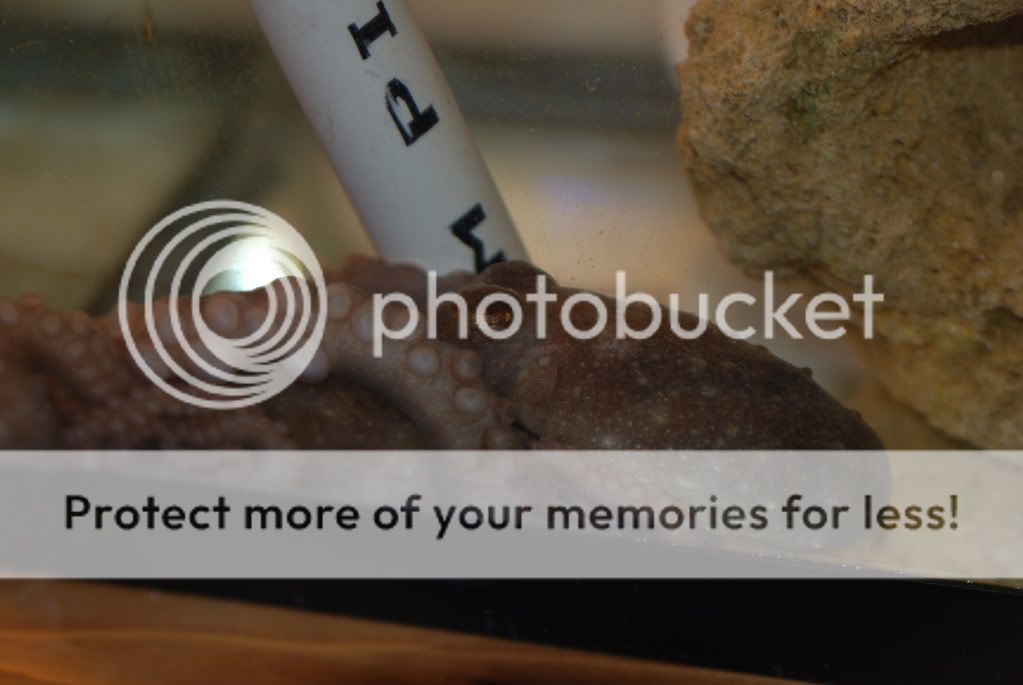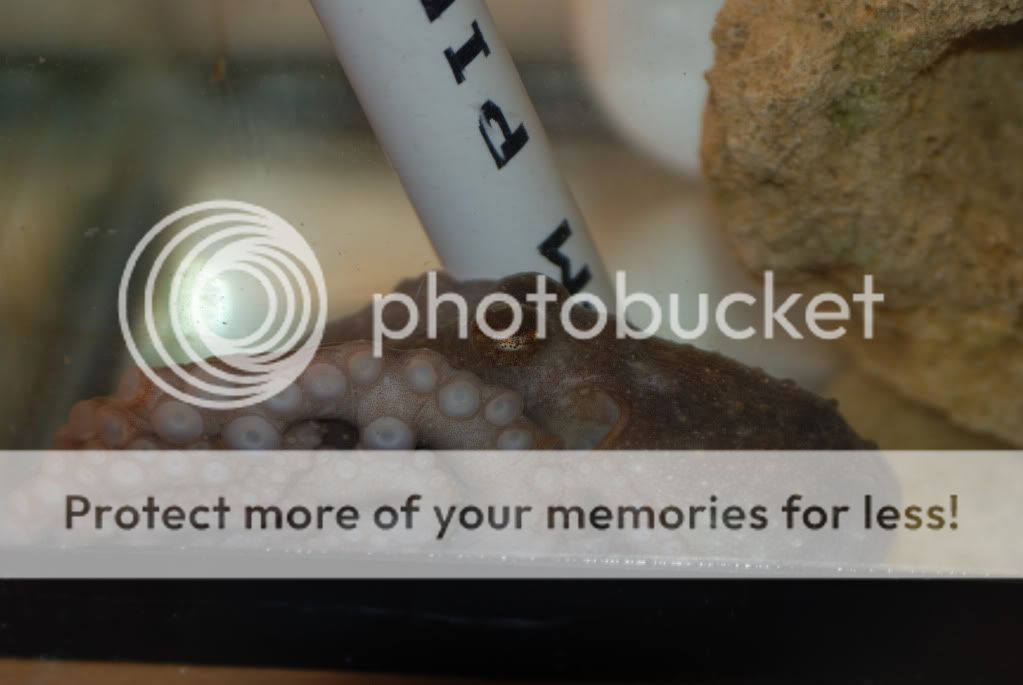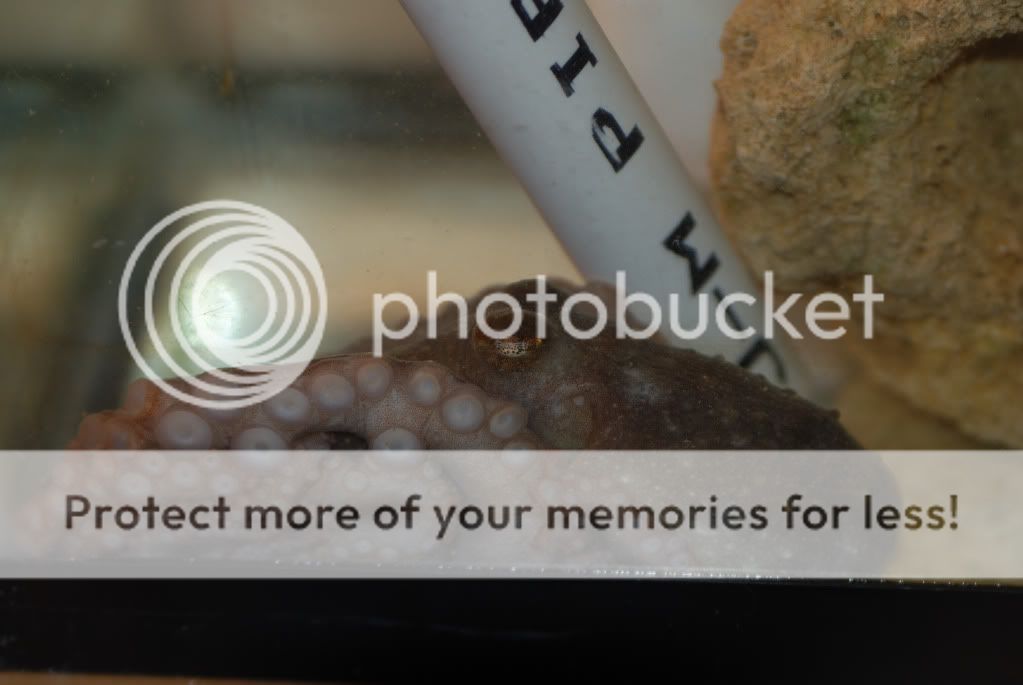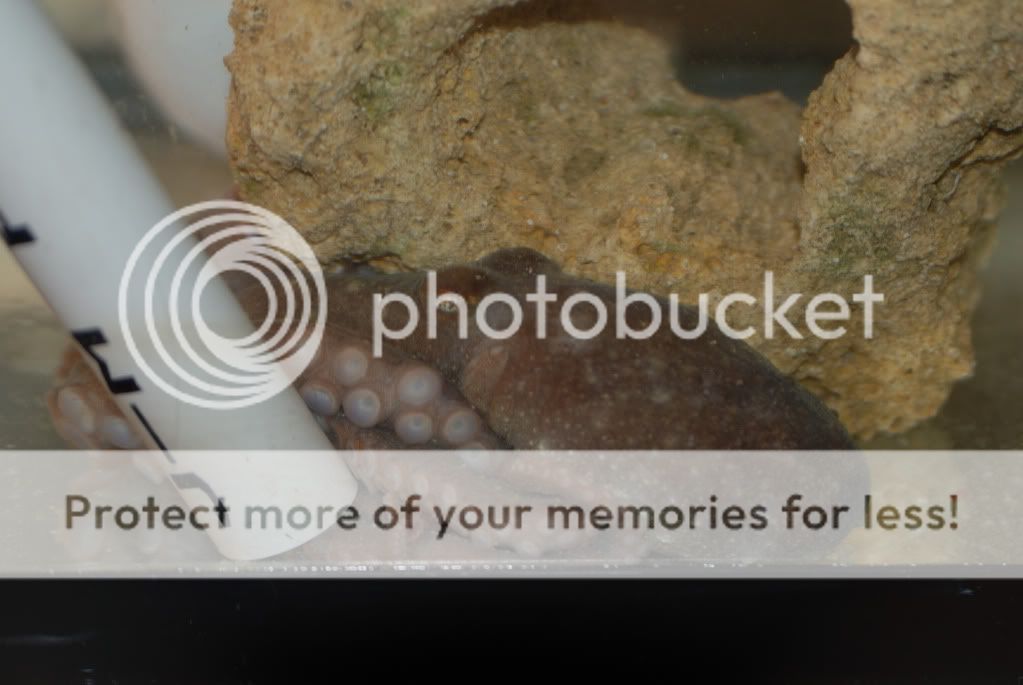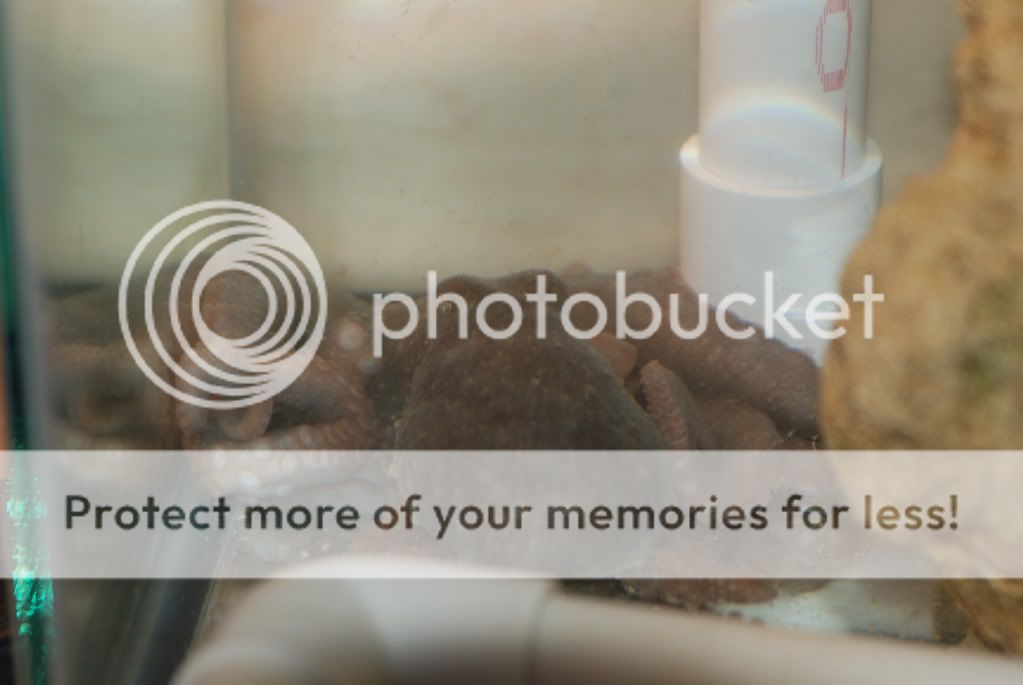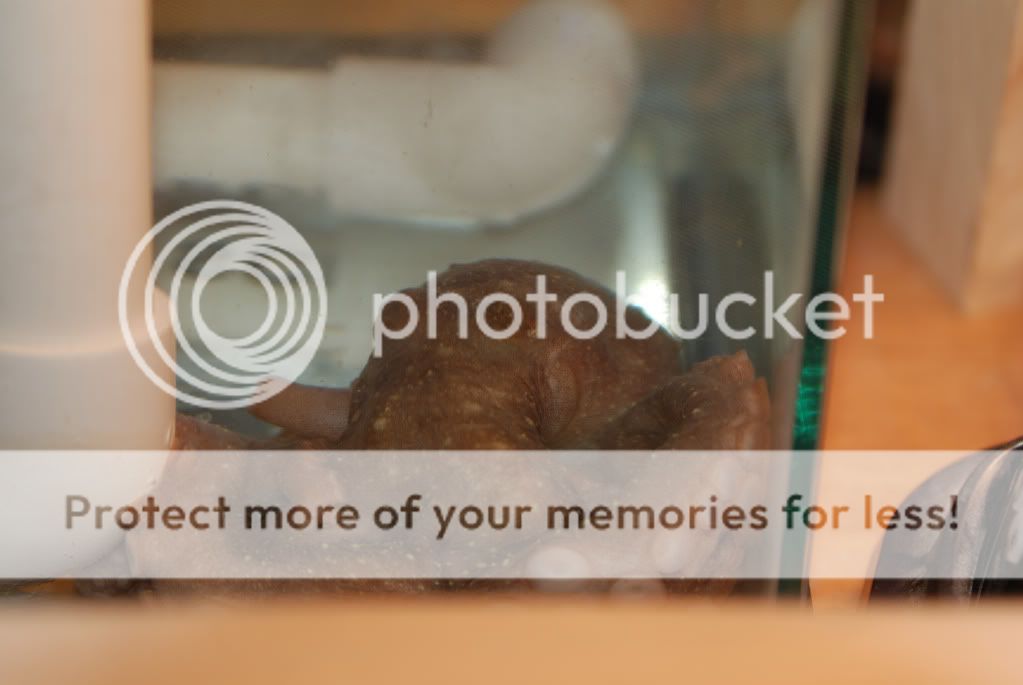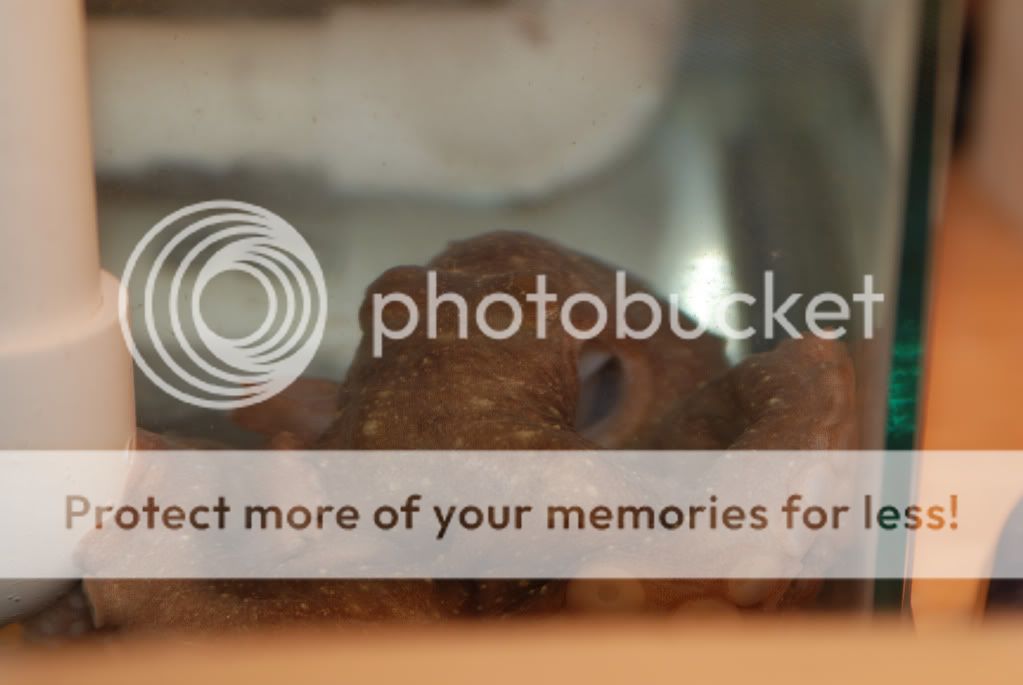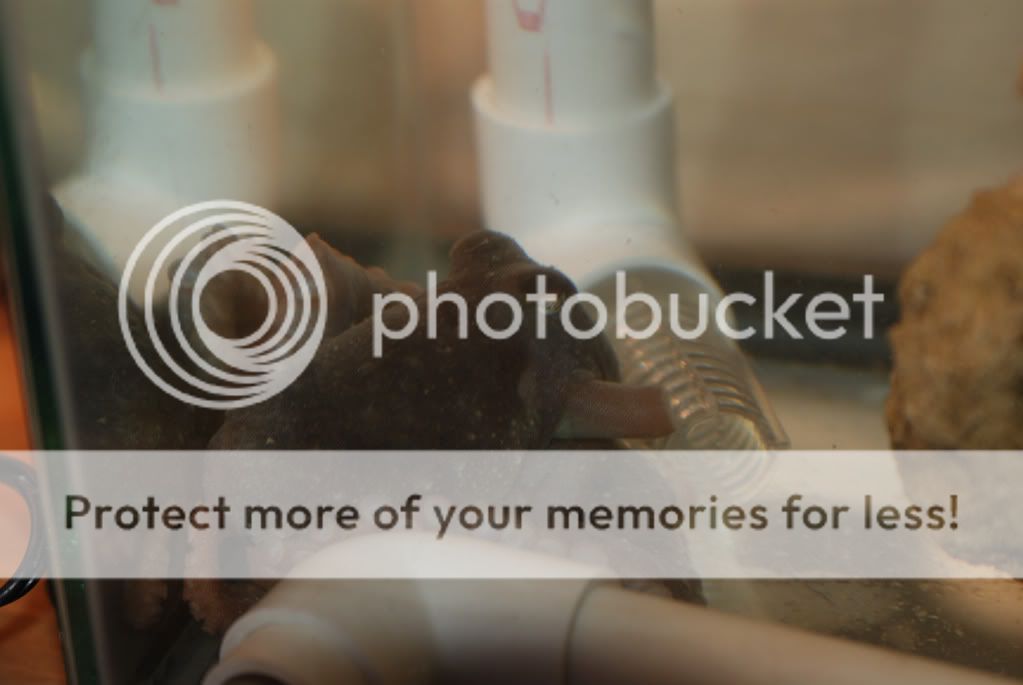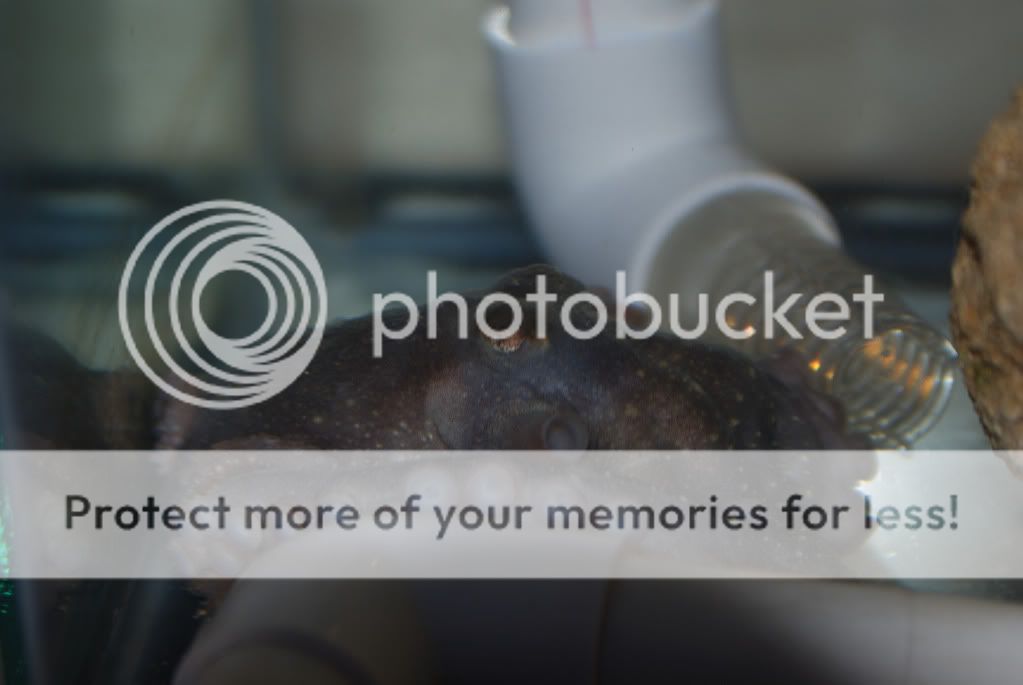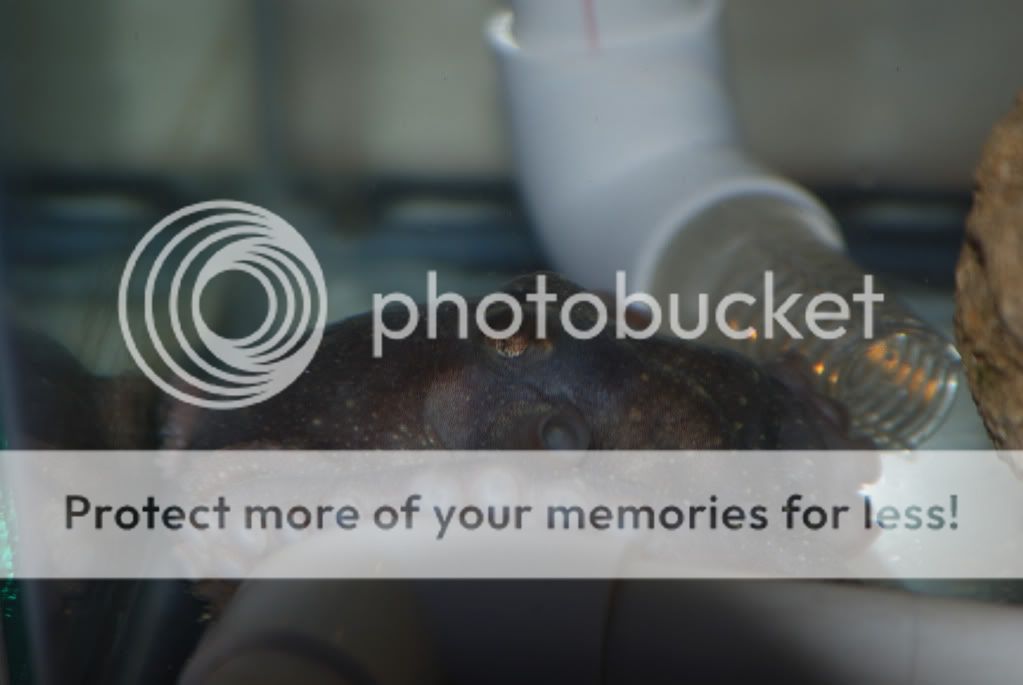Stopped into an Asian Food Market today and was saddened to see a bunch of octopuses in a tank, all dead with the exception of this one and possibly another one, but this one was moving around and looking very sad to be in there... it's different than buying a "don't encourage them" type of thing from a local fish store, as this is a food source and they're going to bring them in regardless... anyway, I couldn't help myself. It's currently in a 10 gallon tank as that's the best I could throw together with cold water and an ice probe to keep it cool until I figure out what it is (tank is woefully small for it, it's arms stretch across the tank and can curl up the wall while it's in the corner). My guess is that it's from the West Coast as it was in with abalone and I think that they are collected in California waters, but no idea. Here are some pictures that I sent to the National Zoo to get an ID from a friend there in the Invert House. The ones where it's just sitting there are from when the lights were on, the ones where it's stretched out are from when it was dark and I turned on the lights.
